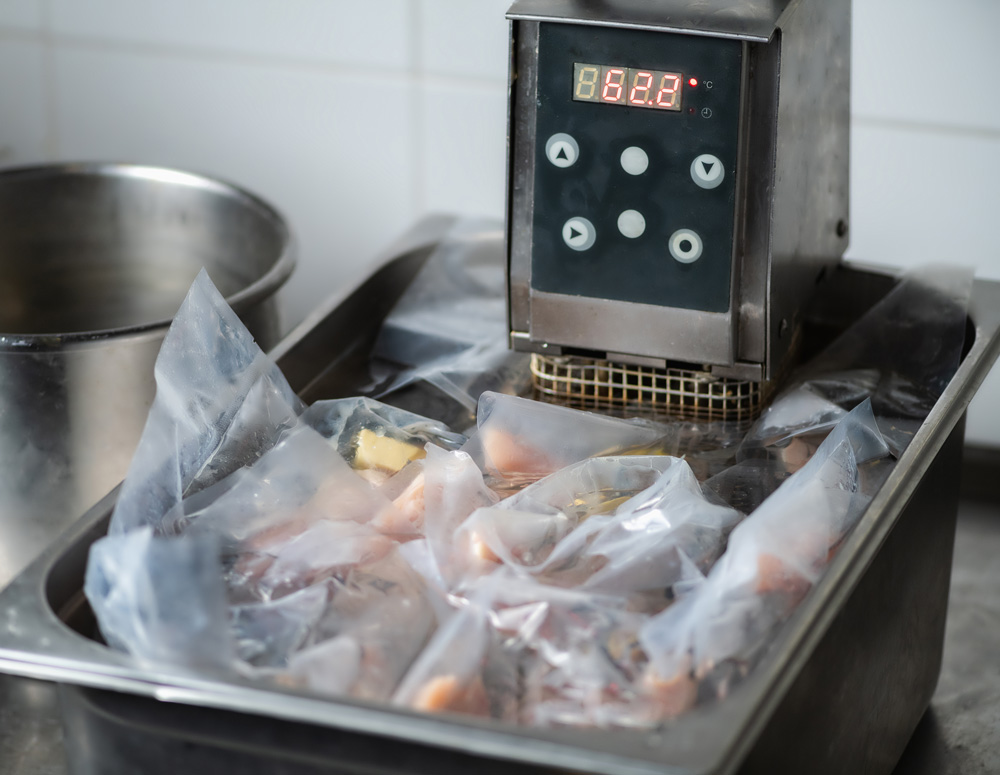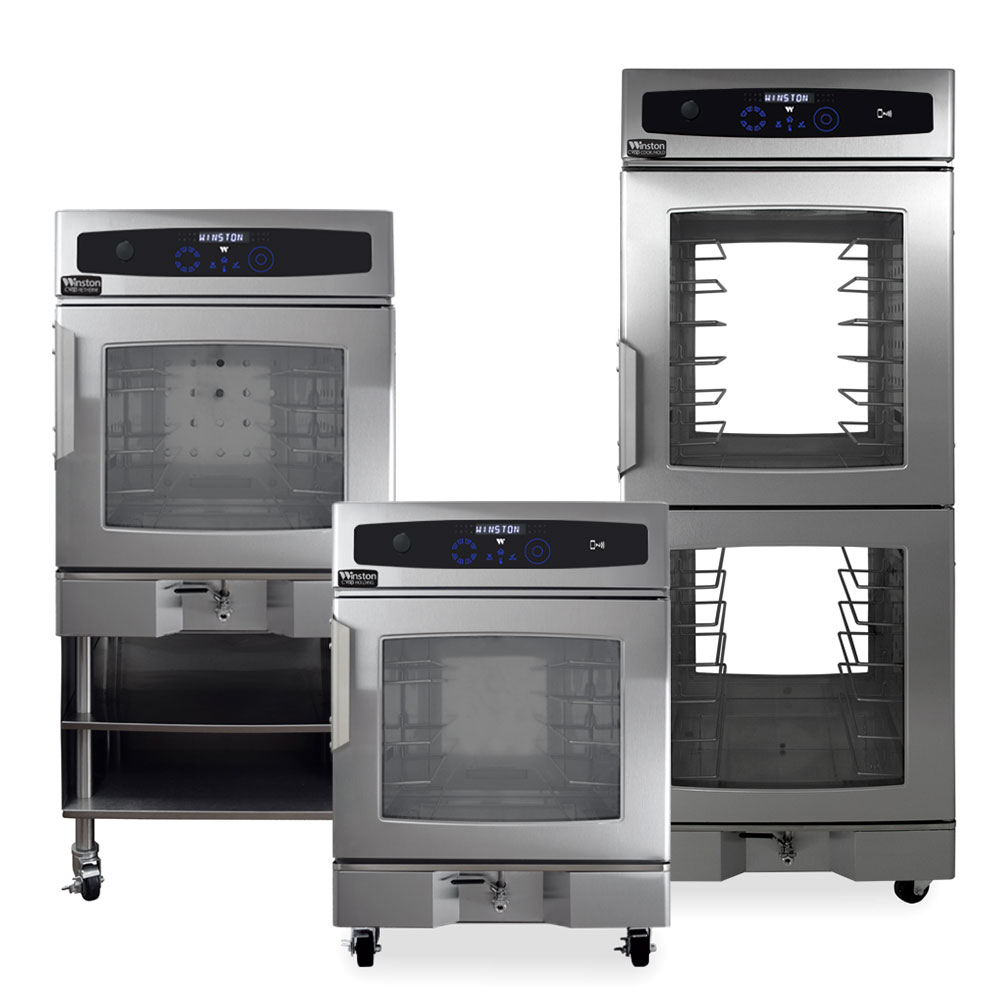CVap: SOUS VIDE EQUIPMENT
Sous vide cooking is all about precision. It ordinarily involves cooking bagged food in a temperature-controlled water bath for an extended period. Sous vide typically utilizes lower temperatures than other cooking methods.
Can you sous vide in a CVap? That’s a big 10-4! Check out this video to get a better idea of how one CVap can replace all your commercial sous vide equipment.

What is
Sous Vide?
Sous vide (French for “under vacuum“)is the ultimate set-it-and-forget-it cooking method. It involves sealing food in food-safe plastic bags and giving it a nice, hot soak in a temperature-controlled water bath. The bags lock in flavor and keep everything juicy. Since food can’t get hotter than the water, overcooking is impossible. This makes sous vide perfect for staging meals in advance, so you can cook to perfection and still have time to take all the credit.
How Does Sous Vide Mode
Work in CVap?
CVap ovens deliver the precision of a sous vide machine without the hassle because who has time for bagging and babysitting? Like traditional sous vide machines, CVap ovens use water as the primary heat transfer medium, but instead of water immersion, CVap surrounds food with heated water vapor. That means you get all the benefits of sous vide without the mess or expense of plastic bags. But no worries if you're a fan of the flavor concentration that bags provide; CVap handles them like a champ. Whether replacing an immersion circulator or just looking for a more innovative way to sous vide, CVap lets you cook your way, bag, or no bag.
CVap isn't any ordinary 'commercial oven'
With a CVap oven, you can replace multiple pieces of traditional cooking and holding equipment.
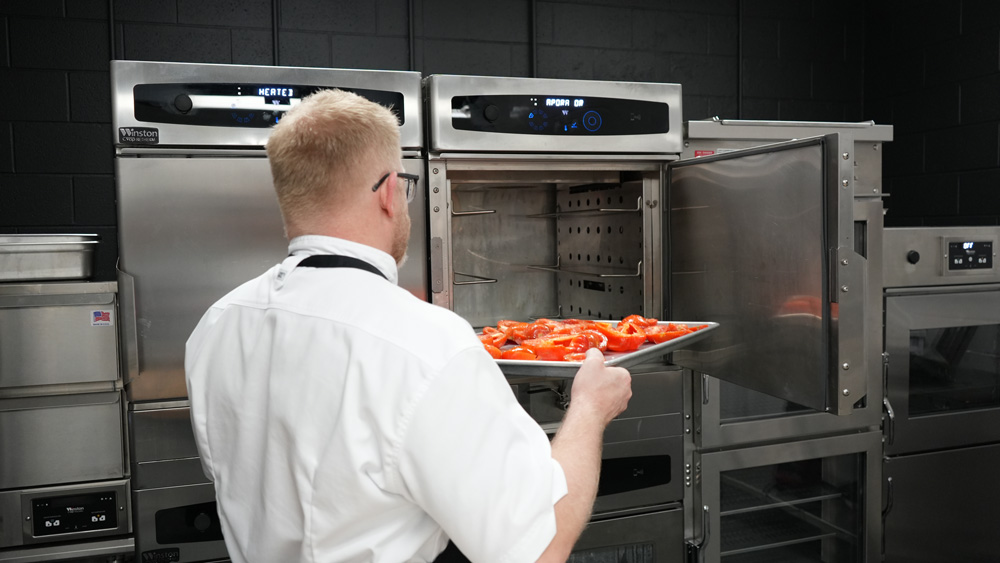

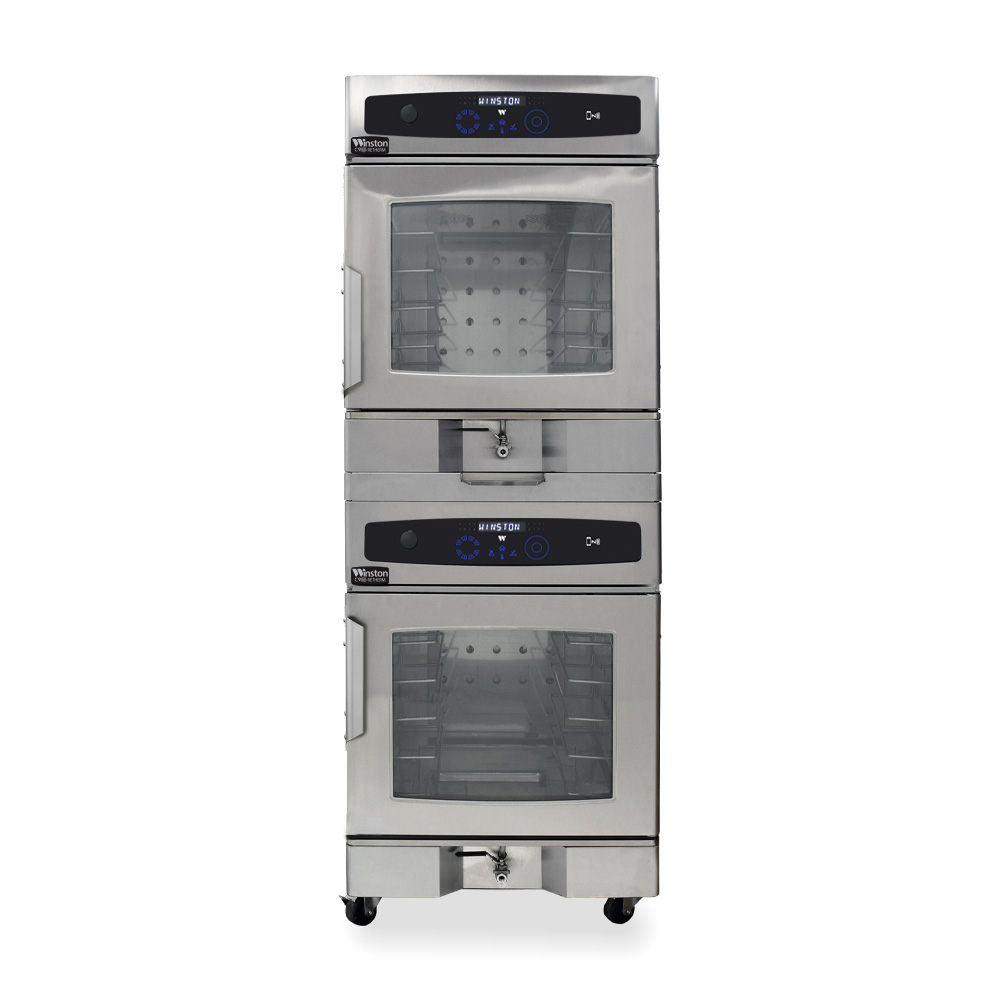
By combining precise heat and moisture control, CVap equipment allows chefs and foodservice operators to cook perfectly, whether for sous vide-style cooking, baking, roasting, or holding.
CVap’s ability to replace immersion circulators, sous vide machines, convection ovens, holding cabinets, and even steamers,
provides all-in-one solutions for greater kitchen efficiency, consistency, and versatility.
Sous Vide Without a Bag
For sous vide cooking without a bag, CVap creates the perfect environment for moisture retention while cooking. Meats, fish, and vegetables can be cooked directly in the CVap chamber, and they will retain their flavor, tenderness, and juiciness. The food is cooked in its natural moisture, without the need for plastic bags, which aligns with growing trends toward sustainability and reducing packaging waste.
Sous Vide with a Bag
If you prefer using bags for sous vide-style cooking, CVap can easily accommodate this method as well. The food can be vacuum-sealed in bags and placed inside the CVap unit. The technology will control both heat and moisture levels to ensure that the food cooks evenly and retains its natural juices. Whether cooking without a bag or using bags, CVap provides the flexibility to execute both methods with precision.
The Benefits of
Sous Vide Cooking
Precise Temperature Control
Sous vide allows for very precise temperature control, which helps ensure that food is cooked to the exact level of doneness you desire. This is especially valuable for cooking proteins like steaks, chicken, and fish, as it minimizes the risk of overcooking.
Consistent Results
With sous vide equipment, you can achieve consistent results every time. Since the temperature is controlled with precision, there is less room for error, resulting in perfectly cooked food without guesswork.
Enhanced Flavor and Texture
Cooking food in a vacuum-sealed bag helps retain the natural juices and flavors of the ingredients. The slow, even cooking process can also make meat incredibly tender and vegetables more vibrant and crisper.
Reduced Food Waste
Sous vide can help reduce food waste because you're less likely to overcook or undercook food. It's a forgiving method that gives you a wider cooking window.
Convenience
You can pre-cook food and keep it in a sous vide bath until you're ready to finish and serve it. Likewise, food cooked in sous vide mode in a CVap oven can also be held for an extended time without overcooking.
Minimal Hands-On Time
Once you've set the temperature and placed the food in the water bath or CVap oven, there's no need for constant monitoring. This frees up staff to work on other aspects of the meal.
Safe and Energy-Efficient
Sous vide is a safe cooking method because it doesn't involve open flames or hot surfaces. It's also energy-efficient, as the water bath or CVap oven only need to maintain a constant temperature, reducing energy consumption compared to other cooking methods.
Perfect for Tough Cuts of Meat
Sous vide is excellent for cooking tougher cuts of meat, as the long, slow cooking process breaks down collagen and connective tissue, resulting in tender and flavorful dishes.
Infusion of Flavors
You can infuse flavors into your food by adding herbs, spices, or aromatics to the vacuum-sealed bags. This enhances the overall taste of your dishes. Although CVap ovens don’t require bags to cook sous vide, they can accommodate their use just fine, offering the same flavor infusions as circulators.
Ramp Up the Volume
CVap ovens have an amazing advantage over immersion circulators!
Here’s where CVap leaves immersion circulators in the dust. CVap ovens offer an advantage over other sous vide equipment in that they can crank out much greater quantities in a small footprint.
Instead of tying up counter space with multiple water baths, CVap lets you cook multiple pans of food at once in about six square feet of floor space. It’s perfect for caterers, cafeterias, and anyone feeding the masses who doesn’t want to junk up their counter space with a bunch of circulators.
What Foods are Best for Sous Vide?
No matter what kind of sous vide equipment you have in your commercial kitchen, it is still an excellent method of cooking for a variety of products.
Steak
Sous vide is excellent for cooking steak to the perfect level of doneness, as it allows for precise temperature control. You can then finish the steak with a quick sear for a beautiful crust.
Poultry
Chicken breasts and thighs cooked sous vide can be incredibly tender and juicy. It's a great way to avoid overcooking and dryness. Duck breasts and legs are great candidates for sous vide cooking as it renders the fat while keeping the meat moist and tender.
Fish and Seafood
Salmon, halibut, shrimp, and other seafood can be cooked evenly without the risk of overcooking.
Eggs
Sous vide is popular for cooking eggs to precise temperatures, whether it's soft-boiled, hard-boiled, or for making custards.
Vegetables
Many vegetables, such as asparagus, carrots, and potatoes, can be cooked sous vide to maintain their texture and flavor. It's a great way to infuse flavors into them, too.
Custards and Desserts
Sous vide is also suitable for making custards, cheesecakes, and other desserts that require precise temperature control.
Why Every Commercial Kitchen Needs to Consider Sous Vide
Let’s face it, commercial kitchens can be chaotic. Orders flying in, cooks scrambling, flames leaping, and at least one person yelling, “Where’s my order?!” Sous vide equipment can cut the chaos. It’s the calm, collected cooking method that takes the stress out of cooking.
First off, you can’t overcook anything (unless you really try, but that’s a you problem). Set the temp, drop the food in, and walk away. No more pan-watching, no more prayers to the dietary deities, simply perfect doneness every time.
Second, consistency is king in a busy kitchen. Your Tuesday night filet will be just as perfect as your Friday rush-hour filet, no matter who’s on the line. Customers will think you have a meat magician in the back when it’s just sous vide keeping everything in check.
And let’s talk about food waste. Throwing away overcooked food is basically tossing money in the trash. Boo! With sous vide, your margins (and your sanity) stay intact. Plus, it’s practically idiot-proof. Even the newbie who still confuses salt and sugar can’t mess this up.
Lastly, it buys you time. Instead of being glued to the grill, your chefs can prep other dishes, plate-like pros, or finally take a quick break without fear of burning something.
